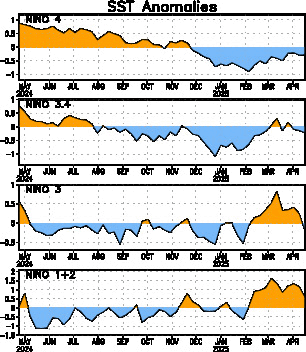Historic Winter Blocking Continues…
Today, the Arctic Oscillation was -5.048. That marks the 14th day this winter that the AO registered -5.000 or below. To put things into perspective, that destroys the previous record of 9 days during Winter 1976-77. It is also more than 40% of the 32 prior days on which the AO reached that level in the 1950-2009 timeframe.
Looking ahead, the ensembles continue to suggest strong blocking will persist through the extended range. Most of the guidance suggests that the AO will remain at or below -3.000 through the extended range.

The composite 500 mb height anomalies for the February 15-March 15 timeframe for all dates on which the AO was -3.000 or below (1950-2009) were:
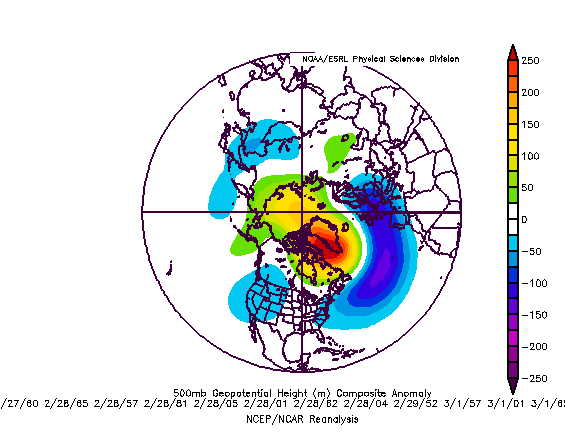
The extended range of the GFS ensemble 500 mb mean anomalies closely resembles the composite pattern:
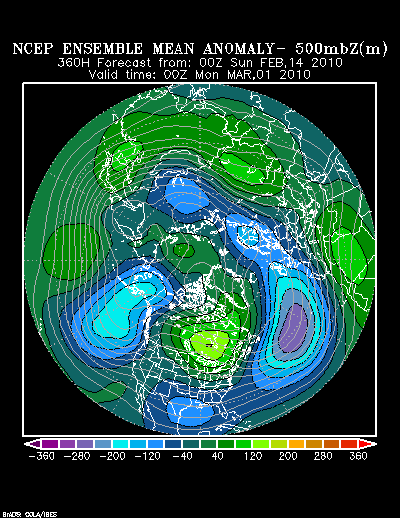
That translates into cold weather for the eastern half of the U.S. into parts of Canada:
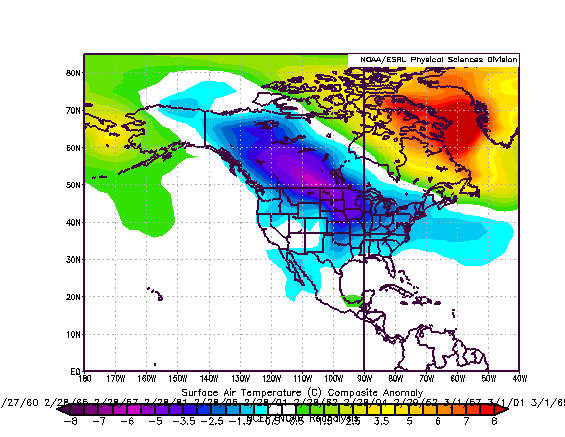
Given the strong likelihood of blocking—and the recent major midwinter warming of the stratosphere should facilitate a continuation of the blocking—any southern stream systems that should develop during the closing week of February into the first week of March are more likely to move off the U.S. East Coast than to cut to the Great Lakes. As a result, something along the lines of the 288-hour solution on the 2/14 18z run of the GFS is more likely than the 348-hour solution shown on the 2/14 12z run of that model.
2/14/2010 12z GFS: 348 Hours:
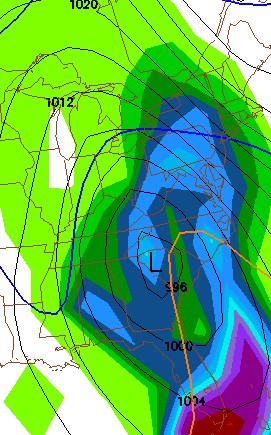
2/14/2010 18z GFS: 288 Hours:
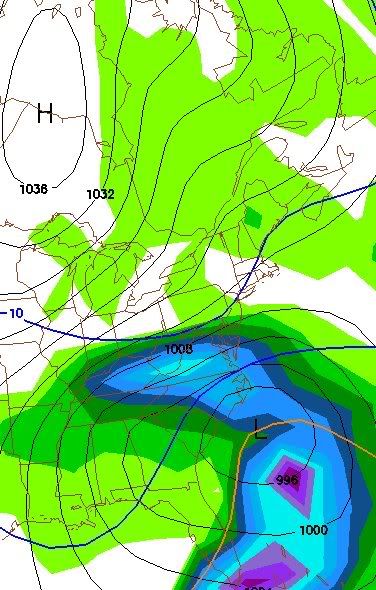
In short, the Mid-Atlantic region’s snow pause does not mark the end of the winter there. Instead, given the continued strong blocking, another KU-type snowstorm remains a realistic prospect. Moreover, given the seasonal migration of the jet stream, southern New England could also benefit from any late February-early March Miller A storms.
 The posts in this forum are NOT official forecast and should not be used as such. They are just the opinion of the poster and may or may not be backed by sound meteorological data. They are NOT endorsed by any professional institution or
The posts in this forum are NOT official forecast and should not be used as such. They are just the opinion of the poster and may or may not be backed by sound meteorological data. They are NOT endorsed by any professional institution or 













